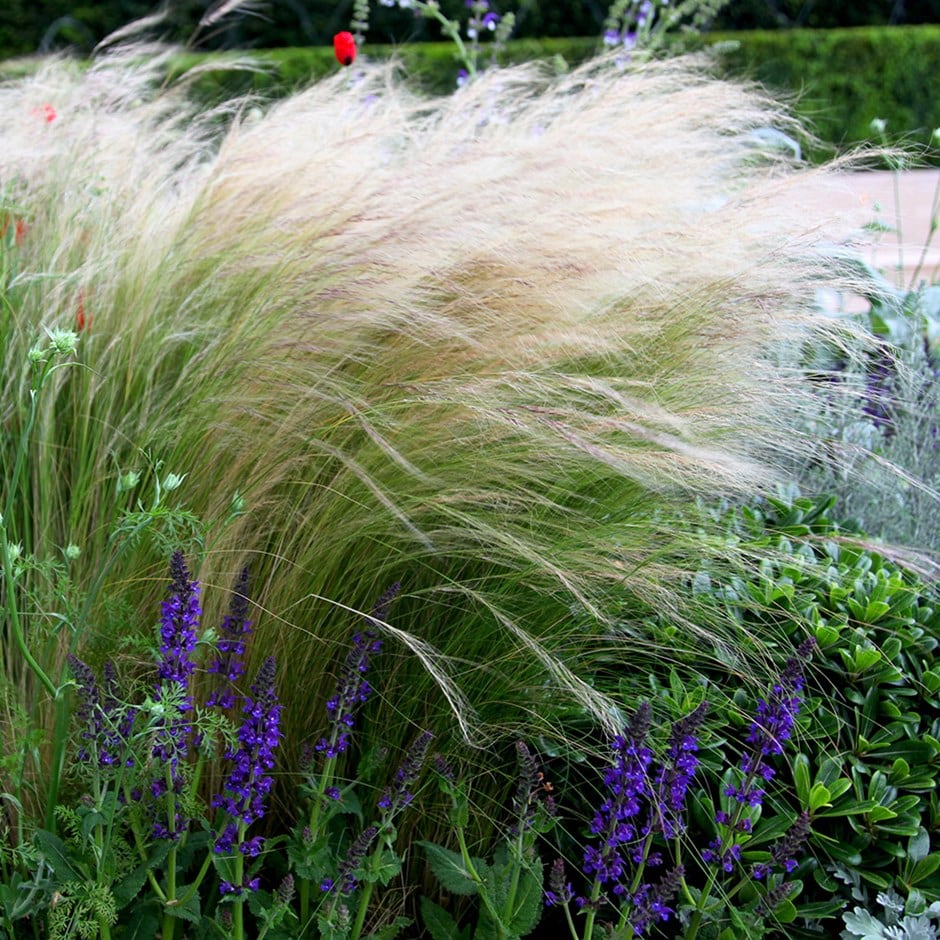Stipa tenuissima
pony tails or angel hair ( syn. Stipa tenuifolia )
This grass is semi-evergreen, so it can lose some of its foliage in winter. In colder regions or more exposed gardens, it may lose it all, but then fresh new growth appears again in spring.
- Position: full sun
- Soil: moderately fertile, moist but well-drained soil
- Rate of growth: fast
- Flowering period: June to September
- Hardiness: fully hardy
Wonderful, wispy, pale yellow-green leaves topped with fluffy plumes of silver-green flowers, maturing to blonde-buff. This versatile semi-evergreen grass is ideal for a sunny gravel garden, large container or new perennial border. It's perfect for introducing movement into a planting scheme since the fluffy flower heads and foliage billow in the slightest breeze.
Choose a sunny location with well-drained soil. Dig a hole twice the size of the root ball and place the plant at the same depth it was growing in its nursery pot, working in plenty of well-rotted compost into the planting area and backfill. Space multiple plants about 30cm (12in) apart to allow for air circulation and growth. Water well after planting and continue to water regularly until the plant is established (once established, Stipa tenuissima becomes more drought-tolerant). Wearing gloves, comb through the plant in early spring to remove dead foliage.
Sow seeds indoors from January to March in trays filled with seed compost. Scatter seeds thinly across the surface, lightly covering them with a fine layer of compost. Gently press down to firm the soil and keep consistently moist but not wet. Cover the trays with glass, polythene, or a propagator lid to maintain humidity. Germination typically occurs within two to four weeks, but it may occasionally take longer. Once germinated, place the trays in cooler conditions. Transplant approximately four to six weeks after germination when the seedlings are large enough to handle. Carefully separate a small clump and transfer them to individual pots filled with well-drained, peat-free compost. Harden off the seedlings before planting them outdoors once all risk of frost has passed.

